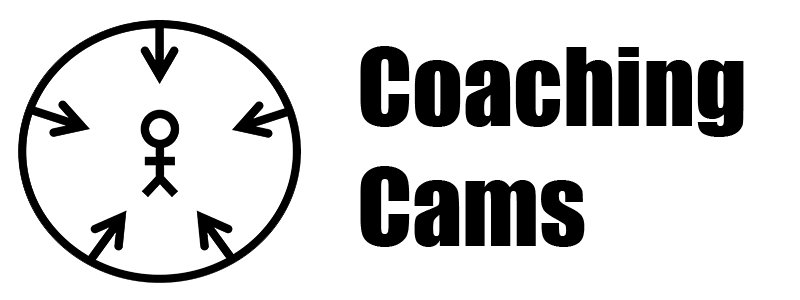
Bowling
Bowling is the sport for which CoachingCams was initially targeted (See About).
Reviewing video recordings of shots that go well and those that don’t can greatly assist coaches to help players improve their game.
Recording a single shot from multiple vantage points simultaneously allows coaches and players to focus on the bowler’s setup, approach, delivery, targeting, ball reaction, and resulting pin fall. Each element of the physical game can be viewed from the most valuable perspective.
Subsequent image analysis can quantify and diagram each shot. Bowlers can try out various coaching suggestions and see how the results change. Players and coaches can monitor progress and identify areas for improvement.
The following videos demonstrate ways CoachingCams have been applied to bowling.
Shot Comparison
LEFT: A common bowling flaw is due to improper body alignment when the player releases the ball. The player “hops” on the final step to compensate for a loss of balance.
RIGHT: Altering the player’s posture at the release point of the delivery improves balance and allows the player to “stick the landing.”
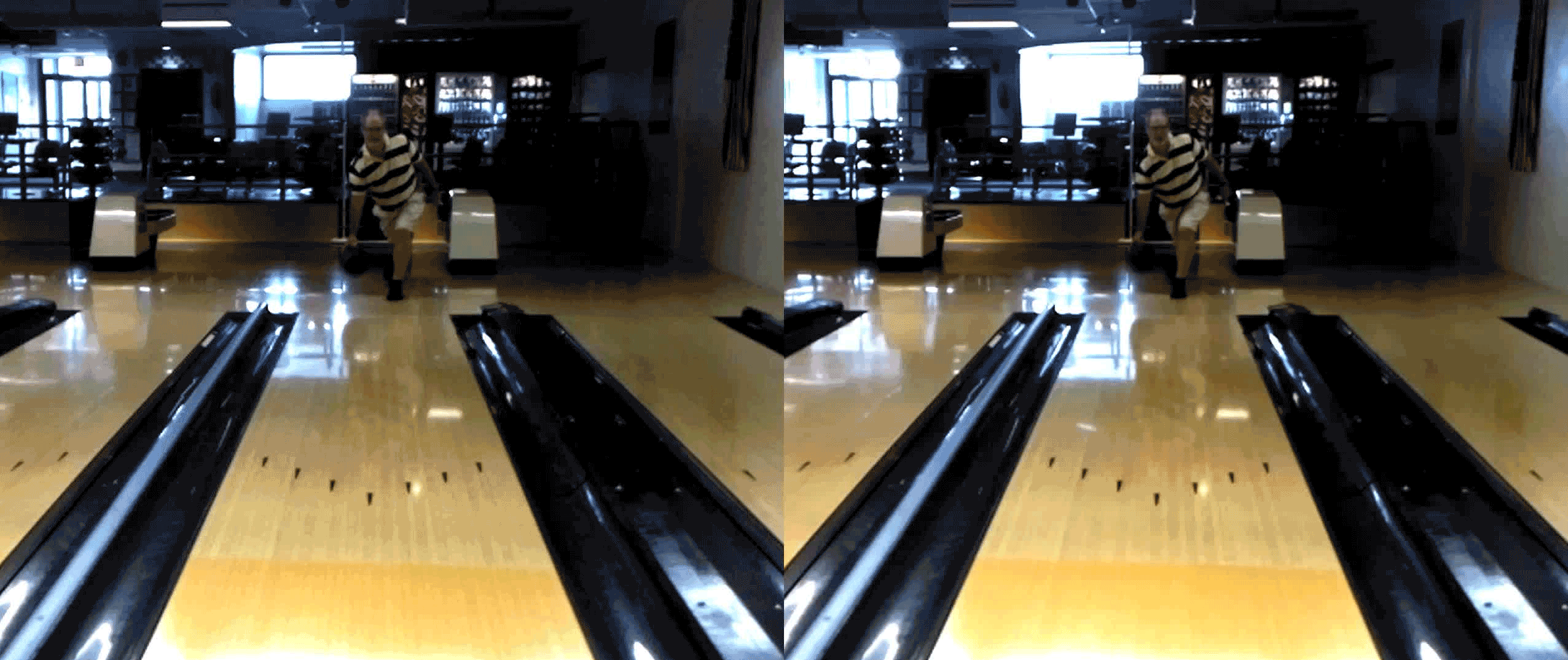
Multiple Views
TOP LEFT: The comprehensive side view reveals setup position, ball start, swing shape, footwork, spine tilt and timing.
TOP RIGHT: View from behind the bowler shows push off direction, swing plane, step direction, and finish position.
BOTTOM LEFT: Forward lane view shows final ball reaction including break point, position and angle the ball enters the pins, pin action, and ball path through the pins (See close-up).
BOTTOM RIGHT: Front view of bowler and lane shows ball placement, swing plane, step direction, finish position, laydown point, and targeting.
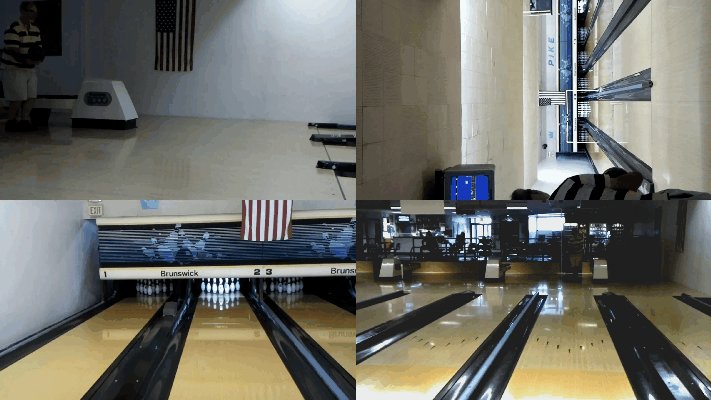
Motion Tracking
A single composite image can illustrate the motions that occur in a video. After reducing image content and color complexity two composite images can be combined to compare two shots. This is a powerful tool for visualizing how changes in equipment, technique, or conditions can effect the reproducibility of a shot.
This image shows the before (red) and after (green) effects of a change in bowler posture at the release point.
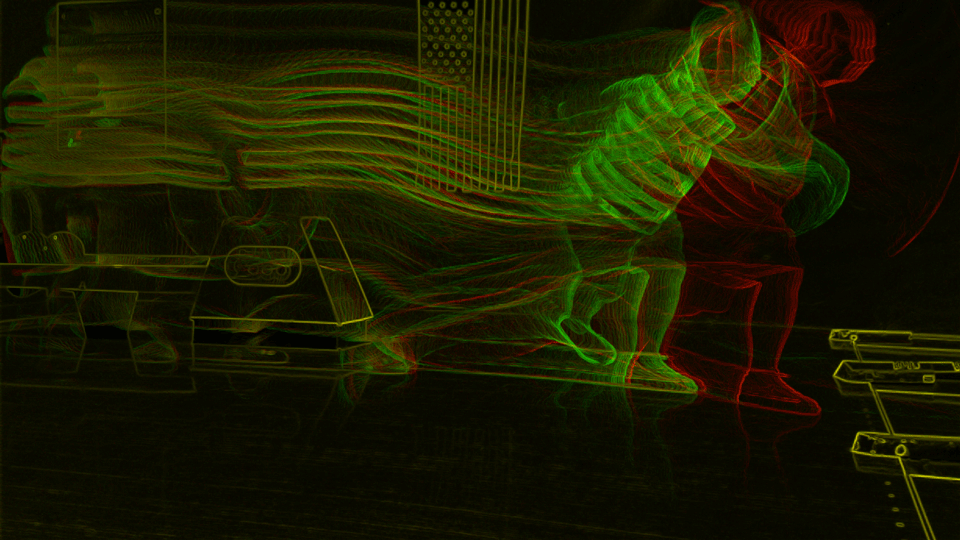
Path Through Pins
A close-up view of a strike shot (above) played in slow motion shows the path of the ball path through the pins.
Image analysis reveals that the ball is on board 17.5 when it contacts the head pin. The ball hits the 1-pin into the 2-pin which takes out both the 3-pin and 7-pin. The ball next hits the 3-pin which drives the 6-pin into the 10-pin. The ball next hits the 5-pin into the 8-pin and then finally the ball hits the 9-pin before falling off the back of the pin deck in the center of the lane.
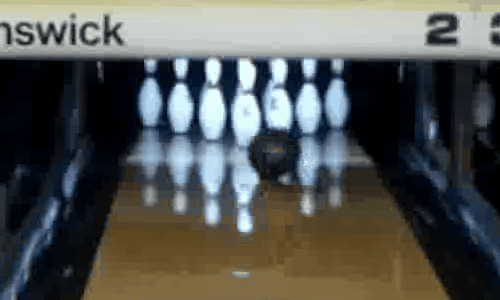
Lane Calibration
Adding a set of grid lines and labels to the video allows the viewer to more easily judge the position of the ball throughout the shot. This is especially helpful for identifying key positions like the break point of the ball (below).
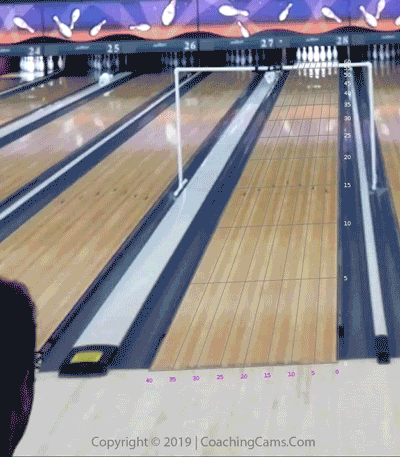
We are grateful to PBA Member Francois Louw for helping us demonstrate our camera system.
Quantitative Analysis
The plot below shows a comparison of board, distance, and ball speed values at the break point position in 21 consecutive shots.
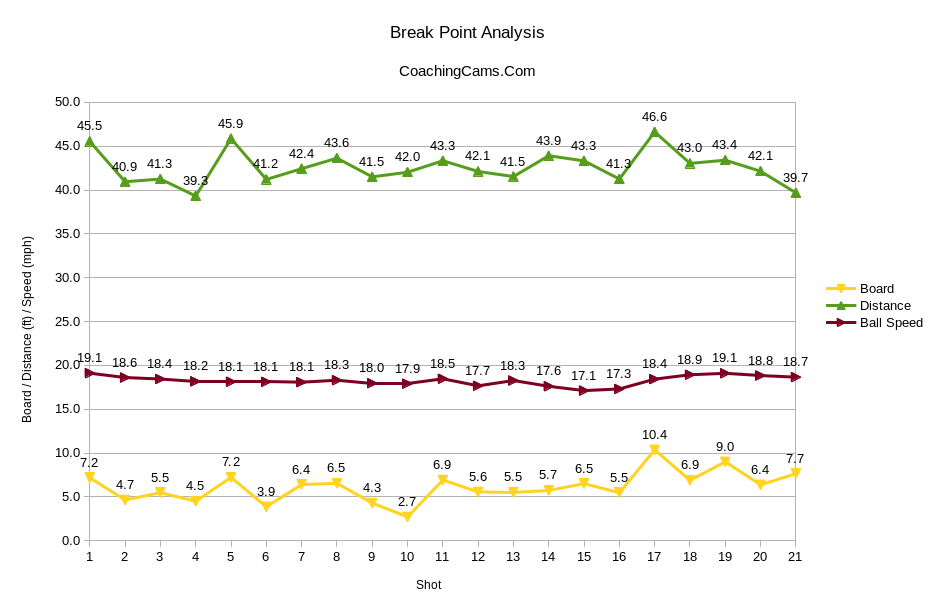
Ball Selection
Shots made with different balls under similar conditions can be compared using video frame overlay with quantitative analysis to guide ball selection. The results of a shot comparison between balls with similar cover stocks that different in weight is shown below.
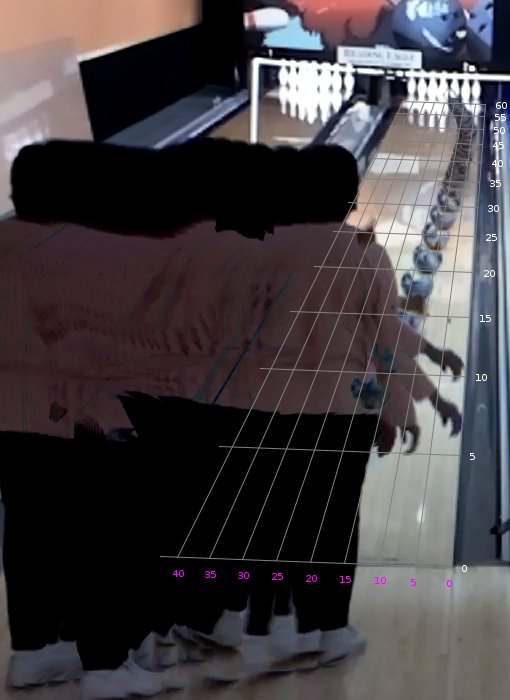
10 lb Ball
Distance Board Speed Comment
15 ft 14 8.2 MPH crossing arrows
45 ft 8 7.7 MPH break point
60 ft 17 7.5 MPH entering pins
13 lb Ball
Distance Board Speed Comment
15 ft 11 8.2 MPH crossing arrows
40 ft 5 7.4 MPH break point
60 ft 16 6.5 MPH entering pins
